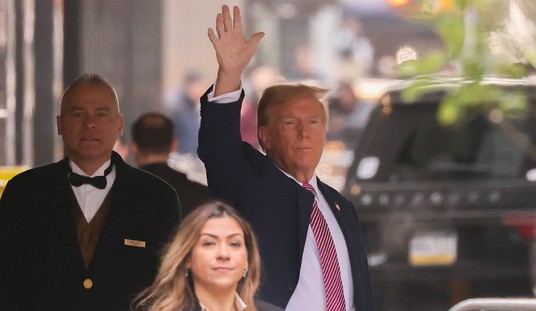If you’d asked the director of any of these Top 10 Film Noir Classics just how he’d personally define “film noir” he’d most likely have responded “film wha?” But way before these films were noticed and dissected by “arty” types and given a French name (“Film Noir” French for “black film”), we the people loved them. These were dark and shadowy Saturday afternoon movies — films filled with hard boiled cops, tough-talking private eyes, cruel and evil “bad guys” and dangerous women, oh yes, especially dangerous women. And that’s exactly what we loved about them.
Studios turned them out by the score – many pure dreck – largely just to fill theater seats on dreary afternoons. Back then they were called “melodramas,” “mysteries” or even just plain old “B movies.” But among the many there were more than a few that proved to be much more than “cheap thrillers,” films that have stood the test of time. Truly great films filled with memorable characters, scripts that bordered on brilliant, and dark, visually compelling, stories one can watch over and over again even after one knows how the underlying mystery has been solved.
So, call them whatever you wish. Here’s our list of the Top 10 Film Noir Classics…
10. The Big Sleep (1946)
How could one not include a film that has one of the most cynical private eyes ever to stand before a camera? We’re talking about Humphrey Bogart as Phillip Marlowe. Add to this a femme fatale so sultry (actress Lauren Bacall playing playgirl Vivian Rutledge) that during the film’s shooting she won over, not only that hardened detective’s heart, but actor Humphrey Bogart’s as well.
Thoroughly entertaining, witty, and with several dark mysteries waiting to be revealed, The Big Sleep has a place on any list of essential film noir. https://www.youtube.com/watch?v=mqpO6mx8WCE
9. The Thin Man (1934)
According to some people’s standards this film should never even have been considered for our list. Isn’t film noir, by definition, “dark?” Yet parts of The Thin Man seem to be all sunlight and roses.
And that’s true enough. But it is equally true that The Thin Man is a picture-perfect film adaptation of a work by one of the detective novel’s true masters, Dashiell Hammett. And more than that, it’s a film whose central characters – “private eye” Nick Charles, his witty wife Nora (and we shouldn’t forget their wired-haired terrier, Asta!), so perfectly captured those found in Hammett’s popular novel that it made them a staple of the film genre.
Of course The Thin Man is not all sunlight and roses. It has dark parts, too. Plenty of them! Evil souls set on murder and the shadow-filled imagery fans of the genre so much enjoy.
So, yes, its “sunny” parts make The Thin Man somewhat of a genre “outlier.”
8. He Walked by Night (1948)
If the film above was a bit too light-hearted for your film noir taste we have just the antidote: He Walked By Night. This is a film that is, from beginning to end, dark, dark, dark.
Shot in a semi-documentary style, He Walked by Night follows the true-to-life story of a murderous ex-GI electronics genius who manages to keep the Los Angeles police at bay for almost two years while he commits one ghastly murder after another.
Gritty and real, He Walked by Night is the other side — the very dark side — of film noir.
7. Shadow of a Doubt (1943)
Light and dark – we’ve seen some of each in the first three films on our list. But only the brilliance of Alfred Hitchcock could create a film shot almost entirely in the sunlight that makes the audience see another world – one of deep, dense, darkness.
As with any Hitchcock film, the director’s brilliance was at work long before the cameras started to roll. For the script of Shadow of a Doubt Hitchcock enlisted the help of Thornton Wilder, whose seminal play “Our Town” had just a few years earlier described “small-town America” as a place of enduring comfort, warmth and love.
But, alas, there is another truth – one that Wilder’s world-view skated past – that Hitchcock purposed to reveal: that our world also is a place of dark-souled evil, “Uncle Charlies” hiding behind smiles as they wait, wait, wait to take murderous advantage of seemingly helpless prey.
6. The Maltese Falcon (1941)
If you, Dear Reader, are any kind of film noir fan you just knew that The Maltese Falcon was going to be on our list, right? It had to be! For here’s a film that sets the ultimate hard and ruthless private eye – Sam Spade — against an equally hard and ruthless femme fatale. Yes, it’s Humphrey Bogart vs. Mary Astor. Can it get any better than that? Again, we answer yes. Just add Gladys George, Peter Lorre and Sydney Greenstreet to the cast and make John Huston the film’s director.
https://www.youtube.com/watch?v=9zSOZCH1iQ8
5. M (1931)
M wasn’t made in Hollywood. Heck, it’s not even in English! Can it really, then, be fifth among the top 10 Film Noir Classics of all time? Yes! Oh, yes!
Brilliant Austro-German film director Fritz Lang had already made over two dozen films – silent films — before he made M, his first “talkie.” That probably has something to do with M’s amazing power. The fear and dread this film conjures is frankly, well, beyond words.
4. The Night of the Hunter (1955)
“Good” vs. “evil,” “Light” against “darkness.” These are often themes embedded in film noir.
But what if you can’t say for sure which is which? What if the darkness is masquerading as “light”? There you have the makings of great film noir. And there you have The Night of the Hunter.
https://www.youtube.com/watch?v=pdKXJ2D3tXk
3. Panic in the Streets (1950)
What? The great, serious, issues-based film director Elia Kazan directing a lowly film noir? No! It couldn’t be!
Oh yes it could. And he did — one with all his great cinematic genius intact and on full display.
Panic in the Streets is scary and dark in the best possible way. It takes a hard-working man – one who just wants to do his job well and have a little time left over to be with his pretty wife and child – and makes him choose between having that life and entering a world of pure hell.
There are bad guys and good guys in Panic in the Streets, just as we’d expect in any film noir. But there is something else as well – an enemy far more insidious and dangerous – an enemy that just cannot be allowed to win.
http://www.youtube.com/watch?v=Yg8MqjoFvy4
2. Touch of Evil (1958)
What would you get if you took one of the world’s greatest directors, gave him a script written by one of its most brilliant dramatists, and then had him direct one of the world’s most gifted actors? The answer is Touch of Evil.
Of course those three persons are really just one. For here we have Orson Welles directing Orson Welles the actor from his own script. With all that going for it the fact that Touch of Evil is pure film noir becomes just sweet cinematic icing on our cake.
As was true with all his work In Hollywood, Welles was in a constant battle with the studio’s marketers and money men while making Touch of Evil. When he, towards the end of the film’s editing stage, left town for a time these men took it upon themselves to reshoot parts of the film, re-edit it to suit their own tastes and even to change the film’s musical score. Fortunately in 1998 a recut version of Touch of Evil — one based closely on Welles director’s notes — was created and released on DVD. That is certainly the one to look for.
If there is one thing Touch of Evil proves (beyond the pure pleasure of watching great film noir!) it’s that genius matters. https://www.youtube.com/watch?v=WS-JcaPFzp4
1. The Third Man (1949)
While we’re on the subject of genius… He’s back! Orson Welles, that is. But this time under the direction of another cinematic genius, Carol Reed — two geniuses working together to make one hell of a motion picture.
The Third Man is more than our #1 Film Noir Classic. Many serious students of cinema consider it one of the greatest motion pictures of any genre ever made.
How does one even start to describe the greatness of The Third Man? The film’s story and script were written by Graham Greene – one of the true masters of suspense fiction. The film’s camera work remained under the close control of the film’s director – who insisted (against much resistance) on using something called “Dutch angles” — shots where the horizon is not parallel to the film’s lower edge.
When most people see films shot this way they describe it as being “off kilter.” And that was just the effect Reed wanted to create. The Third Man is a disturbing look into an unsettled world, one made yet more unsettling by complete moral depravity, evil and soul-sucking darkness.
Viewed from any angle, The Third Man is #1 among the great film noir classics.








Join the conversation as a VIP Member